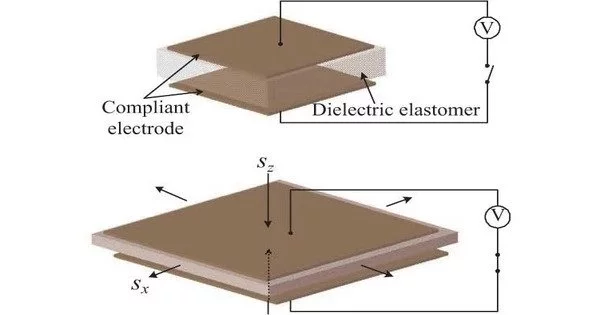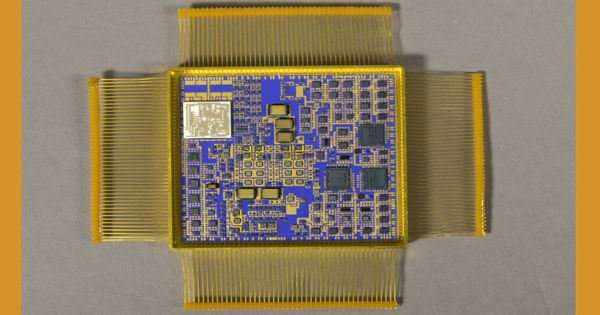Dielectric elastomers (DEs) are intelligent material systems capable of producing huge stresses. They belong to the electroactive polymer (EAP) class. They are a type of smart material that has received a lot of interest and applications in areas including robotics, soft electronics, and actuation systems. Because they may deform in reaction to an applied voltage or electric field, these materials are valuable for a variety of mechanical and electromechanical applications.
Electric energy is converted into mechanical work via DE actuators (DEA). They are light, with a high elastic energy density. They’ve been looked into since the late 1990s. There are numerous prototype applications available. Each year, conferences are held throughout the United States and Europe.
Here are some key points about dielectric elastomers:
- Material Composition: Dielectric elastomers are typically made up of a soft, flexible elastomeric material sandwiched between conductive, compliant electrodes. The elastomeric substance is frequently silicone or other rubber-like materials, but the electrodes can be conductive materials such as carbon nanotubes or conductive polymers.
- Electrostriction: The concept underlying the functionality of dielectric elastomers is electrostriction. When an electric field is passed through an elastomer, the molecules within it align with the field, causing the material to contract in the direction of the field. This contraction is usually isotropic, which means it occurs in all directions uniformly.
- Large Deformation: When subjected to an electric field, dielectric elastomers can undergo large deformations, frequently surpassing several hundred percent strain. One of its main advantages is their capacity to undergo massive deformations.
- High Energy Density: These materials can efficiently store and release mechanical energy. When a voltage is supplied to an elastomer and it contracts, the electrical energy is stored as mechanical strain energy. When you rest, this stored energy is released as mechanical work.
Applications
Dielectric elastomers have found applications in various fields, including:
- Soft Robotics: They are used in soft robotic actuators and grippers, enabling robots to mimic natural movements and interact with delicate objects.
- Haptic Feedback: They can provide realistic tactile feedback in virtual reality and gaming controllers.
- Energy Harvesting: They can be used to harvest energy from mechanical vibrations or movements, converting it into electrical energy.
- Tunable Lenses: These materials are employed in tunable lenses, which can change their focal length when voltage is applied, making them useful in adjustable optics.
- Artificial Muscles: They can act as artificial muscles in various biomedical applications and prosthetics.
Challenges
Despite their numerous advantages, dielectric elastomers confront a number of obstacles, including issues with dependability, durability, and the requirement for high voltage for significant deformation. Researchers are still working on enhancing these materials and addressing these issues.
In summary, dielectric elastomers are a class of materials having distinct electromechanical properties that make them useful in a variety of applications, including soft robotics, actuation systems, and energy harvesting devices. Ongoing research seeks to increase their performance and broaden their practical applications.














